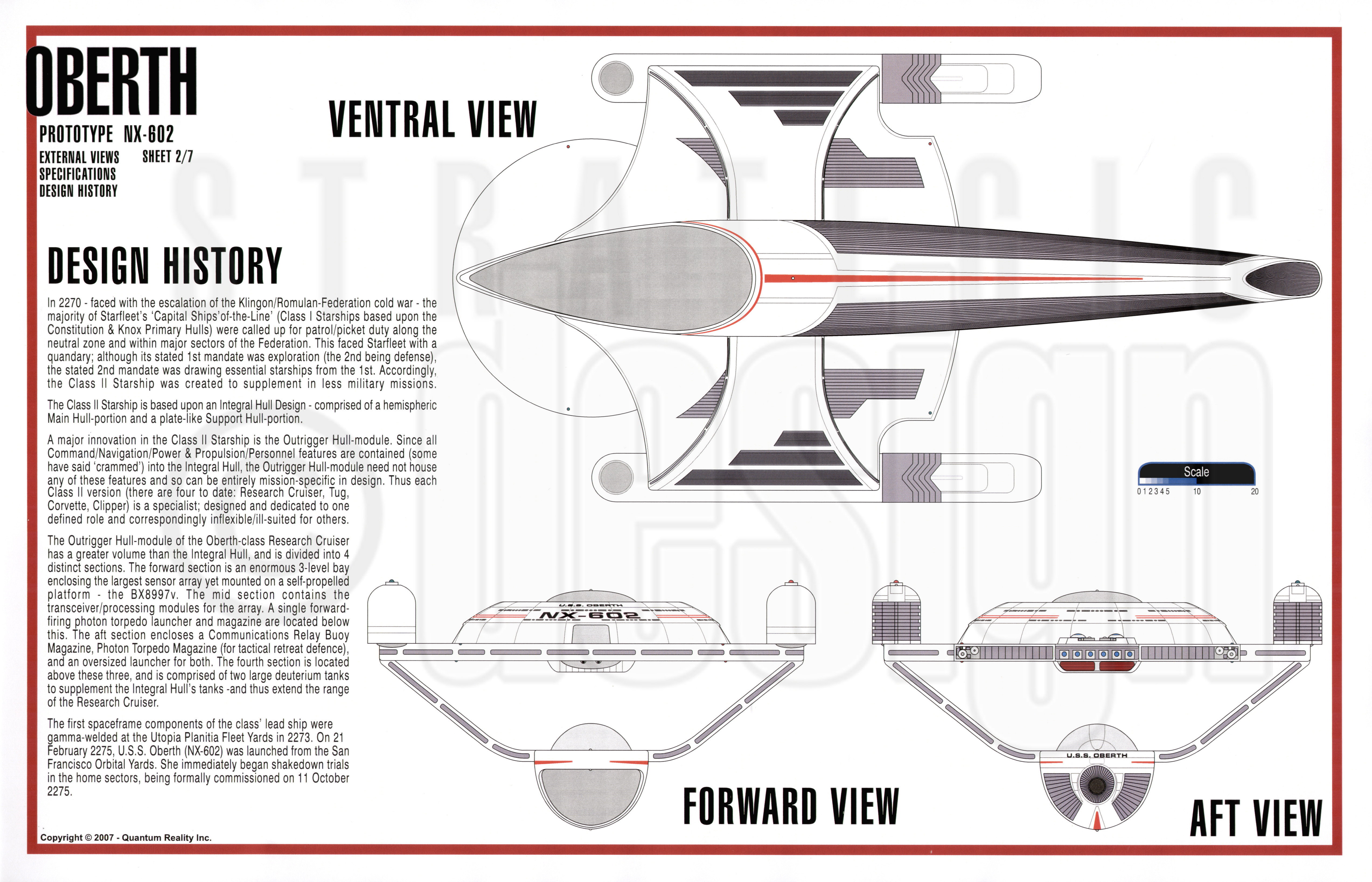



They were tactically inferior to such enemy vessels as the Klingon Bird-of-Prey and the Borg cube. (Star Trek III: The Search for Spock, Star Trek: First Contact) More suited for science missions than combat missions, the Oberth-class had minimal defensive systems it was armed with at least one phaser bank for defense. (TNG: "Hero Worship")ĭesign features of the secondary hull included a docking port located on the port side of the hull. (Star Trek III: The Search for Spock, etc.) In all, the Oberth contained thirteen decks. The secondary hull itself was oblong in shape. The secondary hull was connected to the primary hull at the nacelles by reinforced pylons. The outboard plan of the Oberth's design incorporated a unique split hull design, with an upper primary hull that was composed mainly of the saucer section, which was mounted onto a rear extension that mounts the impulse drive, and warp drive nacelles to either side to the saucer.

The Oberth-class design was atypical among Federation starships of the time. (ENT: "These Are the Voyages." TNG: "The Naked Now", "Realm of Fear") The Oberth-class had an standard crew complement of eighty, but was capable of operating with a minimum crew compliment of five. The class would slowly be phased out of service during the 2370s, shortly after the introduction of the more advanced Nova-class science vessel. (DS9: "Emissary" Star Trek: First Contact) The Oberth was present in several major Federation engagements including the Borg invasion of 2366-2367, where it participated at the Battle of Wolf 359, as well as the Battle of Sector 001 in 2373. The Federation continued to construct Oberth-class starships as late as 2363, at such locations as the USSR's Baikonur Cosmodrome. In addition to this, the Pegasus was the prototype for an illegal Federation cloaking device. The Pegasus was outfitted with an experimental engine and new weapon systems, some of which were used in the designs for Galaxy-class starships. In 2358, the Oberth-class USS Pegasus served as a prototype for testing advanced starship technologies.


 0 kommentar(er)
0 kommentar(er)
